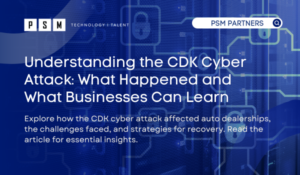Table of Contents
ToggleAccording to a 2023 survey, the United States witnessed a staggering 3,000+ instances of compromised data, highlighting the extensive exposure across all verticals. To protect against such threats, it is essential for companies to implement effective cybersecurity strategies, including the use of deception technology. Effective cybersecurity goes beyond deploying technological solutions; it requires a holistic approach encompassing robust policies, vigilant monitoring, continuous training, and collaboration with industry peers and security experts. Companies must prioritize risk assessment, invest in cutting-edge defense mechanisms, and foster a culture of security awareness across all levels of the organization. Only through concerted efforts to protect defenses and adapt to emerging threats can businesses mitigate risks and safeguard their valuable assets in an increasingly digital environment.
What is Deception Technology?
Deception technology, a cybersecurity toolset, employs detection and response mechanisms to empower security teams in identifying, analyzing, and stopping sophisticated attacks. When a company employs fabricated IT assets within the network, it allows attackers to engage with false systems, enabling proactive defense measures to be used against these types of attacks. Some technology decoys include domains, databases, directories, servers, apps, files, and credentials.
Modern deception platforms employ a proactive approach with a low false-positive detection strategy. Through deep analytics, they focus on understanding human responses to attacks, adjusting to emerging threats before they materialize. Once an attacker is identified within the network, real-time manipulation of the deceptive scenario becomes possible based on the understanding of the attack. Here are some scenarios:
- Influence the attacker’s actions by generating or removing deceptive elements.
- Stimulate specific attacker behavior through the generation of network traffic, alerts, or error messages.
- Utilize hijacking tools to obscure or alter the attacker’s perspective of the environment.
- Create situations that compel the attacker to reveal information about their identity and origins to overcome perceived barriers.
Understanding the Significance of Deception Technology
Deception technology enhances network defense, reducing the likelihood of cybercriminal attacks and network infiltration. Robust security measures, such as leveraging deception technology, are essential for safeguarding company data despite evolving cyber threats. Embracing deception technology isn’t merely defensive; it’s a proactive step towards fortifying modern businesses against cyber threats. To ensure effectiveness, a deception technology solution must demonstrate legitimacy to outsmart sophisticated attackers, seamlessly integrate with existing threat detection strategies. Ideally, it should provide an easy deployment, automatic updates, and seamless integration with Security Information and Event Management (SIEM) platforms to simplify alert management.
Benefits of Deception Technology
Deception technology serves as an additional defense mechanism for organizations against cyber threats, offering several advantages:
- Post-Breach Detection: Deception technology facilitates the detection of potential threats after a breach occurs, but before any damage is caused. This provides organizations with an additional layer of protection to identify and respond to threats before they impact corporate systems significantly.
- Decreased Cyber Risk: By capturing potential intruders within deceptive environments, the risk of attacks on real IT assets is reduced.
- Reduced False Positives: Every interaction with the fake systems signals a potential threat, ensuring that genuine threats are not overshadowed.
- Threat Intelligence: Deceptive environments are constantly monitored, gathering valuable information about attackers’ activities, tools, and techniques. This intelligence can be used to assess and enhance an organization’s defense strategies against cyber threats.
Four Types of Deception Technology
Honeypots: These are decoy systems or servers specifically set up to attract attackers. They mimic the behavior of real systems to lure hackers into revealing their techniques and intentions. It should be noted that A standalone honeypot may not offer adequate incentive for modern-day, sophisticated malicious actors.
Deception Grids: Deception grids deploy decoy assets throughout the network, including endpoints, servers, and data repositories. These decoys are indistinguishable from real assets to attackers but serve to detect and divert malicious activity.
Honey Credentials: After infiltrating an endpoint, attackers often gather passwords to exploit elsewhere on your network. Honey credentials counter this method by providing false login details injected into the endpoint. Any authentication attempt using these honey credentials triggers an alert.
Deception Databases: Similar to deception documents, deception databases contain fake or misleading data. When attackers attempt to steal or manipulate this data, it alerts security teams to their presence and activities.
The key to harnessing the full potential of deception technology lies in its synergy with other security measures and its tailored application to address specific vulnerabilities. While any form of deception technology can be advantageous, selecting the appropriate types to address existing detection gaps ensures the most effective defense-in-depth strategy.
Cyber Attacks Detected by Threat Deception Technology
- Account hijacking attacks: These attacks involve an attacker gaining unauthorized access to an online account. This attack can be performed by an attacker using phishing or social engineering techniques.
- Credential theft: A cybercriminal who utilizes this method of attack to target sensitive information such as passwords and username information. This attack can be performed by an attacker using a Man-in-the-Middle (MitM) technique.
- IoT Attacks: The IoT attacks occur when a cybercriminal targets an IoT system, which is comprised of networks, users, and data that are connected to the internet to steal information or shut down the system.
- Lateral movement attacks: This attack is when an attacker is trying to move laterally through a network. When an attacker moves in a network, that makes a company system at risk of losing sensitive data.
- Spear phishing: A cybercriminal will use this technique to pursue a specific person or group of individuals in the company to try to trick them into providing sensitive information.
Should Your Company Use Deception Technology?
Every business should incorporate deception technology to safeguard their networks from cyber threats. A company’s deception technology strategy should be tailored to its size and industry. Here’s how deception technology can benefit small, medium, and large companies:
Small Businesses: A significant 73% of cybersecurity incidents target small businesses, which often operate with limited budgets. These companies need cost-effective, low-maintenance solutions that provide broad protection. Deception technology techniques like honeypots are ideal for securing networks and protecting sensitive data.
Medium-Sized Companies: With more advanced IT teams and cybersecurity frameworks, medium-sized businesses still face the risk of targeted attacks. Deception technology can augment existing security measures, enhancing the detection of sophisticated threats and safeguarding critical information.
Large Enterprises: Large companies typically possess extensive IT security infrastructures with extensive security capabilities. Deception technology enhances these capabilities by enhancing threat detection, producing internal threat intelligence, and enhancing response strategies. Implementing deception techniques helps large businesses secure their networks.
Deploy Deception Strategies with Microsoft XDR
You don’t need an in-depth understanding of your company’s infrastructure or complex planning to implement effective deception strategies. If you already have Microsoft 365 E5, Microsoft Security E5, or Microsoft Defender for Endpoint Plan 2 licenses, you’re ready to deploy these tactics immediately. With a simple switch, Microsoft’s machine learning algorithm can deploy honey credentials, deception databases, deception grids, and honeypots as needed.
For those seeking a more tailored approach, Microsoft XDR allows administrators to customize accounts and assets to suit specific needs. Your strategy can be as simple or complex as desired. There’s no risk of these deceptive assets being mistaken for real people, documents, or devices—they are isolated from your business operations and solely serve as lures for threat actors.
Once set up, Microsoft XDR actively monitors, providing detailed alerts and reports whenever there is an attempt to access any deception assets. This real-time data reveals the attack vectors used by threat actors, enabling you to strengthen your security posture by implementing new controls and policies to prevent similar attacks on actual assets.
Boost Your Security Posture and Keep Attackers Out with PSM Partners
Regardless of the industry your business or organization is in, safeguarding your IT infrastructure from external threats is crucial. At PSM Partners, we specialize in cybersecurity solutions tailored to businesses and institutions. As your cybersecurity service provider, we develop a comprehensive strategy using the latest technologies and techniques to protect your IT environment from malware, breaches, and other threats. Our skilled cybersecurity professionals implement multi-layer security solutions to enhance and simplify your system’s security. To learn more about PSM Partners’ cybersecurity offerings, contact us at 312-940-7830.
Related Insights
Understanding the CDK Cyber Attack: What Happened and What Businesses Can Learn
Key Takeaways From the CDK Global Cyber Attack Massive DisruptionOn...
Read MoreCloud Engineer vs. Software Engineer: Understanding the Differences
In today’s rapidly evolving technology landscape, both cloud and software...
Read MoreCybersecurity Jobs to Hire in 2025: Building a Strong Team for the Future
The cybersecurity job market is evolving rapidly, driven by advancements...
Read MoreWhat Users Can Expect After The NetDocuments, Worldox Acquisition
Efficient document management is the key to the success of...
Read MoreAbout the Author

Taylor Friend
I'm a goal-oriented Strategic Alliance Manager who is enthusiastic about building and nurturing collaborative relationships that drive business success. My commitment lies in establishing, overseeing, and expanding partnerships that generate greater business opportunities and foster revenue growth for all stakeholders.





